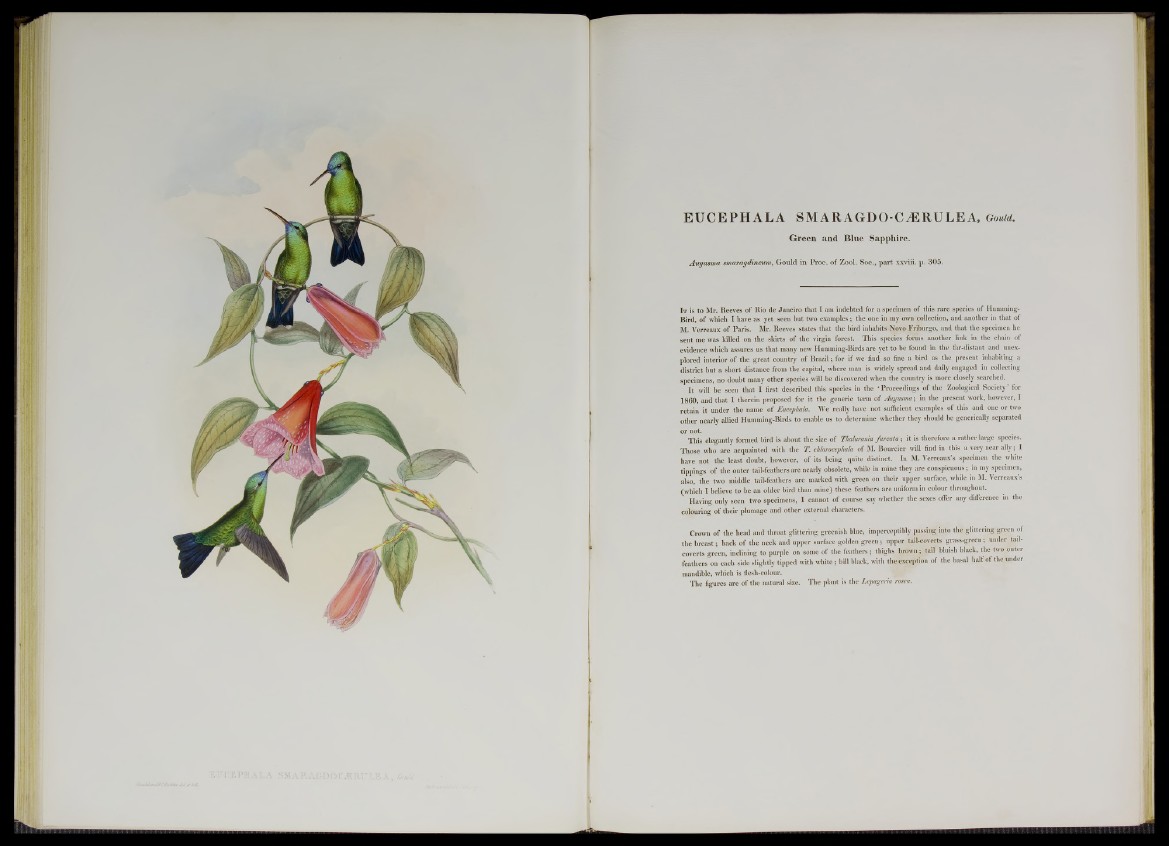
EUCEPHALA SMARAGDO-CJ1RULEA, Gould.
Green and Blue Sapphire.
Augasma smaragdineum, Gould in Proc. o f Zool. Soc., p a rt xxviii. p. 305.
It is to Mr. Reeves of Rio de Janeiro that I am indebted for a specimen of this rare species of Humming-
Bird, of which I have as yet seen but two examples; the one in my own collection, and another in that of
M. Verreaux of Paris. Mr. Reeves states that the bird inhabits Novo Friburgo, and that the specimen he
sent me was killed on the skirts of the virgin forest. This species forms another link in the chain of
evidence which assures us that many new Humming-Birds are yet to be found in the far-distant and unexplored
interior of the great country of Brazil; for if we find so fine a bird as the present inhabiting a
district but a short distance from the capital, where man is widely spread and daily engaged in collecting
specimens, no doubt many other species will be discovered when the country is more closely searched.
It will be seen that I first described this species in the ‘ Proceedings of the Zoological Society’ for
1860, and that I therein proposed for it the generic term of Augasma; in the present work, however, I
retain it under the name of Eucephala. We really have not sufficient examples of this and one or two
other nearly allied Humming-Birds to enable us to determine whether they should be generically separated
or not.
This elegantly formed bird is about the size of Thalurania furcata; it is therefore a rather large species.
Those who are acquainted with the T. chlorocephala of M. Bourcier wilt find in this a very near ally; I
have not the least doubt, however, of its being quite distinct. In M. Verreaux’s specimen the white
tippings of the outer tail-feathers are nearly obsolete, while in mine they are conspicuous; in my specimen,
also, the two middle tail-feathers are marked with green on their upper surface, while in M. Verreaux’s
(which I believe to be an older bird than mine) these feathers are uniform in colour throughout.
Having only seen two specimens, I cannot of course say whether the sexes offer any difference in the
colouring of their plumage and other external characters.
Crown of the head and throat glittering greenish blue, imperceptibly passing into the glittering green of
the breast; back of the neck and upper surface golden green; upper tail-coverts grass-green; under tail-
coverts green, inclining to purple on some of the feathers; thighs brown ; tail bluish black, the two outer
feathers on each side slightly tipped with white; bill black, with the exception of the basal half of the under
mandible, which is flesh-colour.
The figures are of the natural size. The plant is the Lejmgeria rosea.